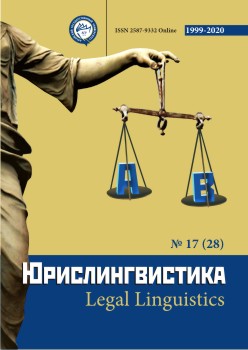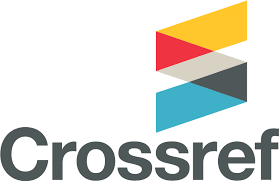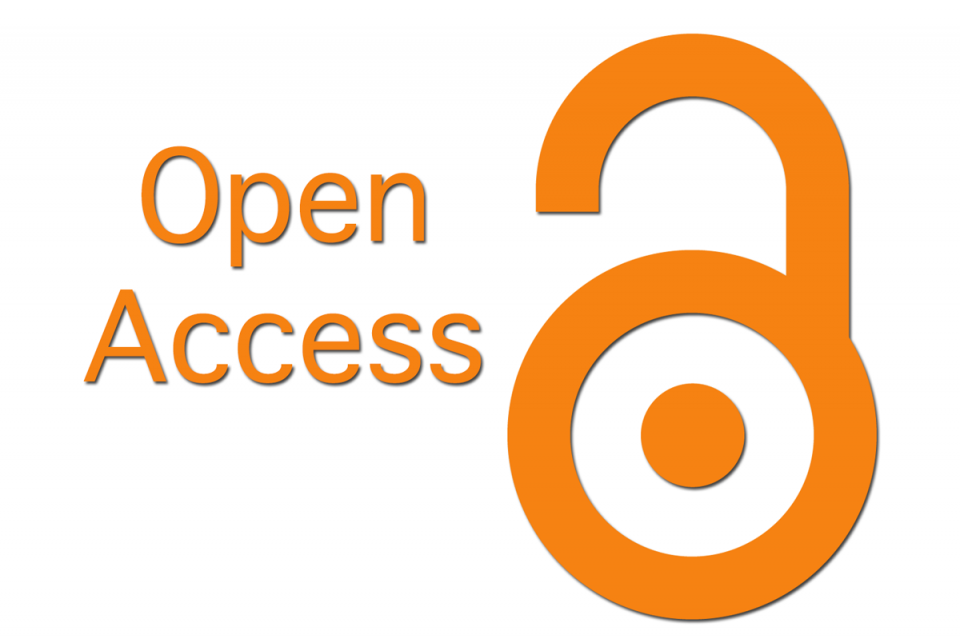Analysis of Verbal Trademarks for Similarity to the Point of Confusion: Algorithm for the Work of a Forensic Linguist (Case Study)
Abstract
The article aims at the description of the algorithm of a forensic linguist work on the analysis of wordmarks(trademarks) for identity and similarity to the degree of confusion. The algorithm is described by a case study from expert practice – comparison of the names of reputable companies “Chickenses” and “Chickentses”, the first of which is a trademark registered within the territory of the Russian Federation.
Downloads
Metrics
References
Методические рекомендации по проверке заявленных обозначений на тождество и сходство (приказ Роспатента от 31.12.2009 г. № 197). URL: http://www.consultant.ru/document/cons_doc_LAW_102309/. Дата обращения: 07.09.2020.
Новичихина М.Е. Товарный знак: вопросы функционирования и лингвистической экспертизы. Воронеж, 2019.
Приказ Роспатента от 27.03.1997 г. № 26 (ред. от 31.12.2009 г.) «О Методических рекомендациях по отдельным вопросам экспертизы заявок на регистрацию товарных знаков» (вместе с «Методическими рекомендациями по определению однородности товаров и услуг при экспертизе заявок на регистрацию товарных знаков и знаков обслуживания», «Методическими рекомендациями по вопросам отнесения заявленных обозначений, товарных знаков и знаков обслуживания к категории вошедших во всеобщее употребление как обозначения товаров и услуг определённого вида», «Методическими рекомендациями по проверке заявленных обозначений на тождество и сходство»). URL: https://legalacts.ru/doc/prikaz-rospatenta-ot-27031997-n-26-o/. Дата обращения: 09.09.2020.
Решение Федеральной службы по интеллектуальной собственности от 28 февраля 2020 г. по заявке N 2013725568/33 «Об оставлении в силе правовой охраны "ЧИКЕНСЫ"». URL: https://internet.garant.ru/#/document/77997596/entry/0. Дата обращения: 07.09.2020.
References
Guidelines for checking the claimed designations for identity and similarity (Rospatent order No. 197 of 31.12.2009). URL: http://www.consultant.ru/document/cons_doc_LAW_102309/. Date of request: 07.09.2020. (in Russian).
Novichikhina, M.E. (2019). Trademark: issues of functioning and linguistic expertise. Voronezh (in Russian).
Rospatent's Order No. 26 of 27.03.1997 (ed. from 31.12.2009) "On Methodological recommendations on specific issues of examination of applications for registration of trademarks" (together with "Methodical recommendations on determination of similarity of goods and services when examining applications for registration of trademarks and service marks", "Methodical recommendations on issues of attribution of claimed marks, trademarks and service marks of the category came into General use as designations of goods and services of a particular kind", "Methodological recommendations for the verification of claimed marks on identity and similarity". URL: https://legalacts.ru/doc/prikaz-rospatenta-ot-27031997-n-26-o/. Date of request: 09.09.2020 (in Russian).
Decision of the Federal service for intellectual property of February, 28, 2020 on the application N 2013725568/33 "On the retention of legal protection of "Chickenses". URL: https://internet.garant.ru/#/document/77997596/entry/0. Date of request: 07.09.2020 (in Russian).
Copyright (c) 2020 Акинина Анастасия

This work is licensed under a Creative Commons Attribution 4.0 International License.
The authors, which are published in this journal, agree to the following conditions:
1. Authors retain the copyright to the work and transfer to the journal the right of the first publication along with the work, at the same time licensing it under the terms of the Creative Commons Attribution License, which allows others to distribute this work with the obligatory indication of the authorship of this work and a link to the original publication in this journal .
2. The authors retain the right to enter into separate, additional contractual agreements for the non-exclusive distribution of the version of the work published by this journal (for example, to place it in the university depository or to publish it in a book), with reference to the original publication in this journal.
3. Authors are allowed to post their work on the Internet (for example, in a university repository or on their personal website) before and during the review process of this journal, as this may lead to a productive discussion, as well as more links to this published work (See The Effect of Open Access).











